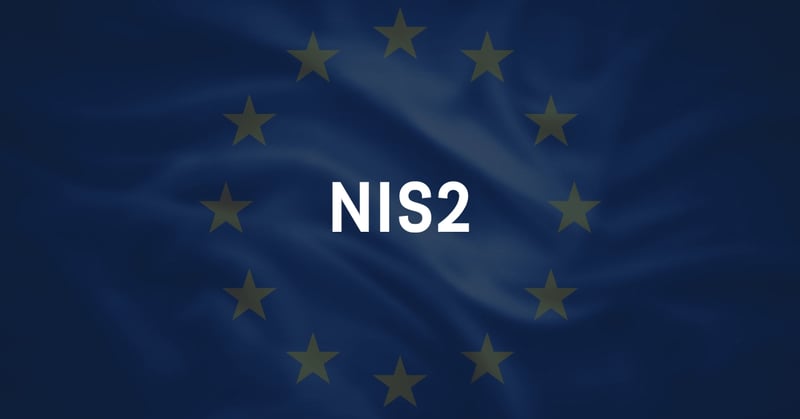ISO 27001
The ISO 27001 is an internationally recognized benchmark for information security management and serves as a useful tool for organizations to showcase the strength of their security measures to potential customers. By adopting a systematic approach, this standard helps protect sensitive information within a company. Although conducting a vulnerability assessment is not mandatory for ISO 27001, it emphasizes the importance of identifying and addressing vulnerabilities as part of a comprehensive risk management strategy.
3 Principles of ISO 27001
Confidentiality
This principle refers to the protection of information from unauthorized access and disclosure. It ensures that sensitive data is accessible only to those who have the right to view it.
Integrity
Integrity relates to maintaining the accuracy and consistency of data over its entire life cycle. It assures users that information hasn’t been altered in unauthorized ways.
Availability
Availability ensures that information and related assets are accessible when needed by those authorized to use them.
Optimizing Information Security with ISO 27001
Achieving and maintaining ISO 27001 compliance involves a continuous process of:
-
Risk Assessment
Identifying and assessing information security risks. -
Risk Management
Implementing controls and measures to mitigate identified risks. -
Continuous Improvement
Regularly reviewing and improving the ISMS to adapt to changes in the organization’s information security landscape.
ISO 27001 requires organizations to perform a risk assessment to identify and assess information security risks. Vulnerabilities in systems, applications, or processes are one of the factors that contribute to these risks. Organizations are expected to consider vulnerabilities when identifying and evaluating risks to the confidentiality, integrity, and availability of information.
Once risks are identified, ISO 27001 mandates that organizations develop a risk treatment plan. Part of this plan may involve vulnerability management. If vulnerabilities are identified as significant contributors to information security risks, the organization should take steps to treat those vulnerabilities.

Tackle ISO 27001 Requirement with Next-Gen Vulnerability Management
Elevating Security Through Continuous Improvement
ISO 27001 emphasizes the importance of a continuous improvement cycle. Organizations are required to regularly review and update their risk assessment, risk treatment plan, and information security controls.
While ISO 27001 does not prescribe specific vulnerability assessment methodologies or tools, it highlights the need for organizations to integrate vulnerability assessment and management into their overall information security program. The standard advocates a risk-based approach, and vulnerability assessment is vital in identifying and mitigating risks to an organization's information assets. Consequently, organizations seeking ISO 27001 certification should have processes in place to assess, prioritize, and remediate vulnerabilities as part of their information security management system.
Risk Assessments
Automated and continuous risk assessments (vulnerability management) to identify risks.
Risk Treatment Plan
We support our customers in implementing a long-term risk treatment plan.
Control Selection
We support finding technical vulnerabilities, as well as performing vulnerability management and supporting the process of remediating vulnerabilities.
Continuous Improvement
Vulnerability management plays a crucial role in this ongoing process by helping organizations stay informed about emerging vulnerabilities and adapting their security measures accordingly.
Embarking on a Secure Journey
Comprehensively understanding and implementing the ISO 27001 requirements is a crucial step toward establishing a resilient and secure information environment within your organization. By adhering to the principles of risk assessment, risk treatment, continuous improvement, and control selection, you can protect your organization's valuable data and foster a culture of security awareness and proactive risk management among your employees. These standards provide a reliable framework that can guide you through the complex realm of information security, offering a clear and trustworthy path toward a secure and compliant future.
Risk Assessment (§6.1.2)
ISO 27001 requires organizations to perform a risk assessment to identify and assess information security risks.
Risk Treatment (§6.1.2)
Once risks are identified, ISO 27001 mandates that organizations develop a risk treatment plan. Part of this plan may involve vulnerability management.
Continuous Improvement (§10.1)
ISO 27001 promotes a cycle of continuous improvement. Organizations are required to regularly review and update their risk assessment, risk treatment plan, and information security controls.
Control Selection (§6.1.3)
The ISO 27001 standard includes a list of control objectives and their corresponding controls in Annex A. These include A.12.6.1 for managing technical vulnerabilities, A.14.2.7 for system vulnerability assessments, and A.14.2.8 for remedying technical vulnerabilities.
See For Yourself
Try Our Platform for Free Today!
Learn More About ISO 27001
What Is ISO 27001?
ISO 27001 is a standard for information security that was issued by the International Organization for Standardization (ISO) and the International Electrotechnical Commission (IEC). Formally known as ISO/IEC 27001:2013, this standard provides a framework for establishing, implementing, maintaining, and continually improving an Information Security Management System (ISMS).
The ISMS is designed to help organizations secure their information through a risk management process, involving the development and implementation of policies, procedures, and other measures to prevent information security breaches and respond effectively if they occur. ISO 27001 is applicable to organizations of all types and sizes, including public and private companies, government entities, and not-for-profit organizations.
ISO 27001 is part of a broader family of standards known as the ISO/IEC 27000 series, which covers various aspects of information security management and includes additional standards that provide guidance on specific areas, such as risk management, auditing, and implementing security controls.
Why Is ISO 27001 Important?
ISO 27001 is important for several reasons, primarily related to its comprehensive framework for managing and protecting information. Below are key reasons why ISO 27001 is considered vital for organizations:
1. Risk Management:
- Risk Identification: Helps in identifying and addressing the various risks related to information security.
- Risk Mitigation: Provides systematic guidelines to mitigate, transfer, avoid, or accept risks effectively.
2. Data Protection:
- Security Controls: Establishes a set of controls to protect data from unauthorized access, disclosure, alteration, and destruction.
- Data Breach Prevention: Implements preventive measures to reduce the likelihood of data breaches and leaks.
3. Legal and Regulatory Compliance:
- Ensures that organizations comply with legal, regulatory, and contractual requirements related to information security.
- Provides a framework to demonstrate compliance with various data protection laws (like GDPR, HIPAA), reducing legal penalties and fines.
4. Business Continuity:
- Facilitates the development of business continuity and disaster recovery plans to ensure operations can resume quickly after a security incident or other disruptions.
5. Customer Confidence:
- Trust Building: Enhances the confidence of customers, clients, and stakeholders by demonstrating a commitment to information security.
- Competitive Advantage: Offers a competitive edge in the marketplace, especially when clients or customers are concerned about the security of their data.
6. Internal Culture:
- Security Awareness: Fosters a culture of security awareness among employees and stakeholders, promoting responsible behavior.
- Employee Training: Facilitates ongoing training and awareness programs to ensure staff understands and follows security policies and procedures.
7. Operational Efficiency:
- Process Improvement: Improves efficiency by optimizing and standardizing processes related to information security management.
- Cost Reduction: By preventing security incidents and data breaches, organizations can avoid financial losses and reputational damage.
8. Global Recognition:
- ISO 27001 is internationally recognized, providing global credibility and acceptance. This is crucial for businesses operating or planning to operate in multiple countries.
9. Third-Party Relationships:
- Ensures that suppliers, vendors, and other third parties adhere to the same high standards of information security, protecting the extended enterprise environment.
10. Audit and Review:
- Facilitates regular audits and reviews to continually improve the organization’s information security posture and compliance with the changing security landscape.
What’s The Difference Between ISO 27001 Compliance And Certification?
Compliance with ISO 27001 means an organization follows the standard’s guidelines, often verified through internal assessment but without official third-party validation. Certification, however, is a formal recognition obtained after an accredited third-party body assesses and verifies the organization's adherence to all ISO 27001 requirements. Certification generally provides greater trust and recognition compared to compliance alone.
Latest news

DORA decoded: Fusing operational resilience & vulnerability management
In this blog post, we're diving deep into DORA - why it's vital for digital service providers and financial institutions and why you should care about it.

Upgrade your cyber defense to comply with NIS2 - A step-by-step guide on how to prepare
This webinar will focus on the practical steps that IT departments need to take to improve their cyber security posture and adhere to NIS2 regulations.

